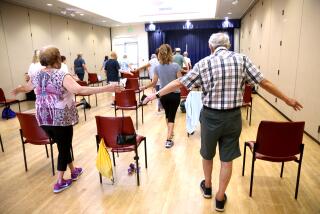Live to 100 or longer? Odds are way better for women
There is good and bad news for women. They still face various forms of discrimination including earning less than their male counterparts, but they will have some measure of revenge by having a better chance to live longer, according to the Census Bureau.
In a report released Monday, the Census Bureau notes that for every 100 women who live to be at least 100 years old, there are just 20.7 men who have reached the same goal. The figures are based on the 2010 Census that counted 53,364 people ages 100 and older in the United States.
Living longer has been a powerful ideological draw for centuries. It was the search for the fabled Fountain of Youth, for example, that sent some from Europe off to the New World as part of the age of exploration.
Since then, science has replaced mythology, and large and steady improvements in trauma medicine, along with pharmacology, clean water and food and access to all forms of care, have helped lengthen life spans, especially in industrialized areas. Why people live longer is a complex dance of genetics and more mundane factors such as income and diets in different cultures.
According to the census data, the number of centenarians, while large, was still small compared with the overall population. Fewer than 2 people in 10,000 are centenarians. More than half of centenarians, about 62.5%, were 100 or 101 years old. So-called super-centenarians, those at age 110 and candidates to move into the record books, accounted for just 0.6% of the centenarian population in the United States, the census found.
In 2010, 85.7% of centenarians lived in an urban area, where they probably had better access to healthcare. By region, 17,444 centenarians lived in the South, the favored region. The Midwest had 13,112, the Northeast 12,244 and the West 10,564.
Not surprisingly, the more populous states tended to have more people living past 100 years. At 5,921, California led the states. Alaska with 40 centenarians had the fewest.
Race and ethnicity were also factors. In 2010, 82.5% of centenarians were whites, compared with the 72.4% whites in the total U.S. population, the census said. Among centenarians, 5.8% were Latino; the ethnic group accounted for 16.3% of the population.
ALSO:
Weekend storm dumps 15 inches of snow on Minnesota
Movie theater massacre: James Holmes due in court today
Pot and brownies a bad mix for University of Colorado class
More to Read
Sign up for Essential California
The most important California stories and recommendations in your inbox every morning.
You may occasionally receive promotional content from the Los Angeles Times.











